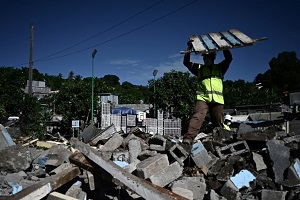
By Annisa Essack
26:08:2020
Two spectacular mega-bridges are about to be added to South Africa’s growing national road network. The multi-billion-rand N2 Wild Coast Road Project will change the landscape of the 410 km stretch between the Gonubie Interchange in East London to the Mtamvuna river near Port Edward.
The South African National Roads Agency Limited project will see the construction of two mega-bridge structures on the Msikaba and Mtentu Rivers, seven additional major river bridges and several interchange bridges, as well as new intersection, interchanges, pedestrian walkways and agricultural under and overpasses. They will offer visual and engineering delights to citizens and tourists alike.
The first mega-bridge will cross the Mtentu River just outside Xolobeni. The second will cross the Msikaba River near Lusikisiki. The Mtentu Bridge will be one of the longest main-span balanced cantilever bridges in the world and the first of its size in South Africa. Reaching heights of around 220 metres, it will become the highest bridge in Africa and the whole of the Southern Hemisphere. The current highest is the Bloukrans Bridge, which has a 217-metre deck height.
The second mega-bridge, the Msikaba Bridge, will be 580 metres long. This bridge will cross the spectacular and pristine Msikaba river gorge and will be the longest span cable-stayed suspension bridge in South Africa – and possibly Africa. Cable-stayed bridges are distinct in their use of towers and cables to support the bridge deck. This single-span bridge will be anchored back into the rock on either side of the gorge.
It is one of the government’s 18 Strategic Integrated Projects to support economic development and boost service delivery in South Africa’s poorest provinces, such as the Eastern Cape. The bridges form the backbone of greenfields portion of the N2WCTR. The Wild Coast project is a national priority coordinated and directed by the Presidential Infrastructure Coordinating Commission.
According to SANRAL the N2 Wild Coast Road Project holds significant socio-economic benefits for local communities, including an estimated 8,000 direct jobs envisaged for construction work, whilst operational work is anticipated to create 900 direct jobs in addition to the 16,000-20,000 indirect jobs that will flow from the project.
Construction was set to begin in February 2019 but was marred by community protests and delays. The agency said that the Covid-19 pandemic has caused some delays to the project but activities have now resumed following the easing of lockdown restrictions according to the government’s risk-adjusted strategy.







0 Comments